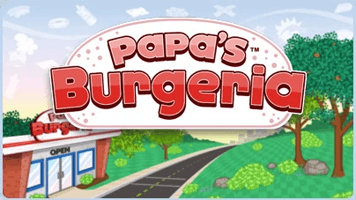6252 votes 4.4 / 5
Highway Traffic
In Highway Traffic game, players are responsible for driving down the highway, avoiding other vehicles, and avoiding accidents. The situation becomes challenging because other vehicles are slowing down, speeding up, or stopping abruptly, so you must always maintain your attention and prepare for sudden movements. If you remain away from other cars for a longer period of time, you will accumulate more points and be able to obtain additional upgrades. Highway Traffic becomes very challenging very quickly, so you must develop crazy driving skills to succeed.
How to play?
Here are some key to play game:
| Key | Action |
|---|
| W or Up Arrow | Accelerate |
| A/D or Left/Right Arrow | Steer the car |
| Space Bar | Use handbrake |
| Left Shift or F | Use car boost |
Game Modes
Several modes exist in Highway Traffic to make the game even more appealing and challenging. There are four different modes, each having its own unique challenges.
- One way: All cars are driving in the same direction without any regard for oncoming traffic.
- Two-way: When vehicles are able to travel in either direction, this is two-way. If you drive the wrong way, you get more points and coins than if you drive one-way.
- Time attack: This mode limits your time, as its name suggests. The goal is to survive the traffic without causing any accidents until the time is up. You’ll need to be prepared because it can get pretty wild pretty fast.
- Speed Bomb: When driving the bus, you should be careful. If you drive slower than the speed limit or collide with another car, the bomb might explode. A bus explodes.
What are the features of the game?
- Models of multiple cars
- The three weather options
- A choice of four games
Effective Solutions to Reduce Highway Traffic
Addressing highway traffic issues requires a combination of infrastructural improvements, smart technology, and behavioral changes. Below are some effective measures:
Smart Traffic Management Systems
Modern technologies like AI-based traffic monitoring, adaptive traffic signals, and real-time navigation apps help manage traffic congestion more efficiently.
Expansion and Improvement of Road Infrastructure
Building additional lanes, flyovers, and alternate routes can help decongest busy highways. Properly designed roads minimize bottlenecks and ensure smooth vehicle flow.
Promotion of Public Transport
Investing in metro systems, high-speed buses, and carpooling initiatives can reduce the dependency on private vehicles, lowering traffic congestion.
Strict Traffic Law Enforcement
Stronger implementation of traffic rules, fines for violations, and public awareness campaigns can improve discipline on highways, reducing unnecessary congestion.
Work-from-Home and Flexible Hours
Encouraging remote work and flexible office hours can significantly ease peak-hour congestion, as fewer commuters will be on the roads at the same time.
FAQs About Highway Traffic
Conclusion
Highway traffic remains a persistent challenge, but with strategic planning and technological advancements, we can mitigate its impact. By investing in smart traffic management, improving public transport, and enforcing strict traffic rules, authorities can create a smoother, safer, and more efficient road network. For individuals, responsible driving habits, carpooling, and flexible work arrangements can contribute to reducing traffic congestion. A collective effort from governments, businesses, and the public is essential to overcome the challenges posed by highway traffic and ensure a better commuting experience for all.








